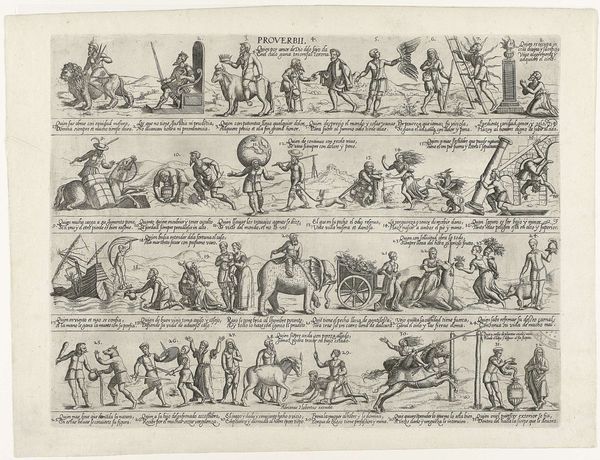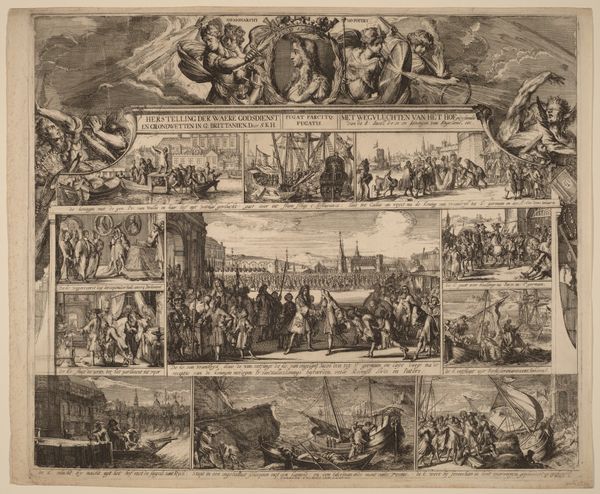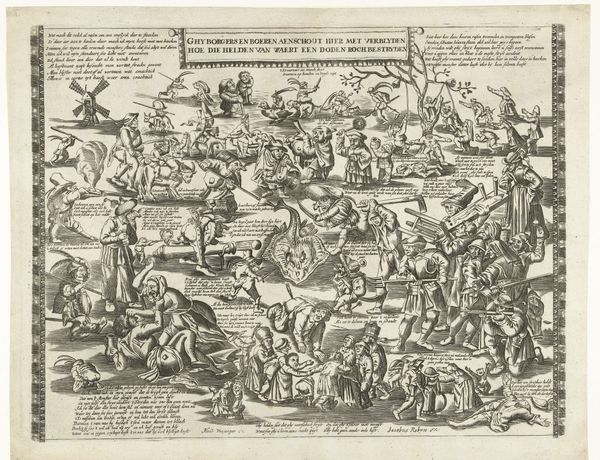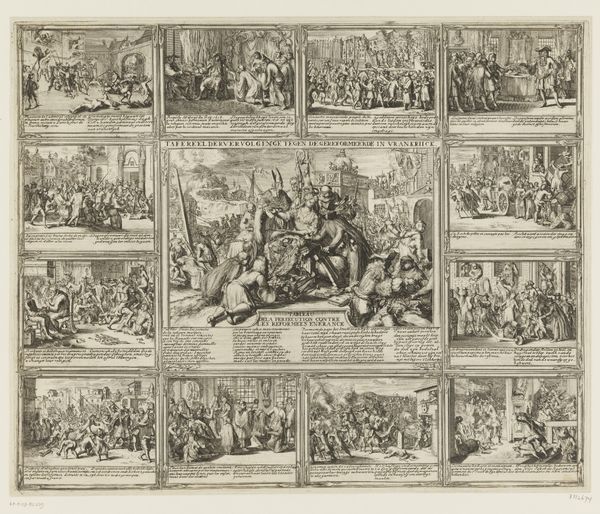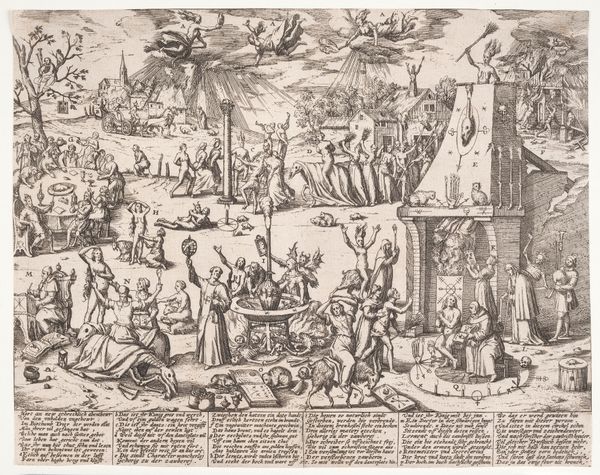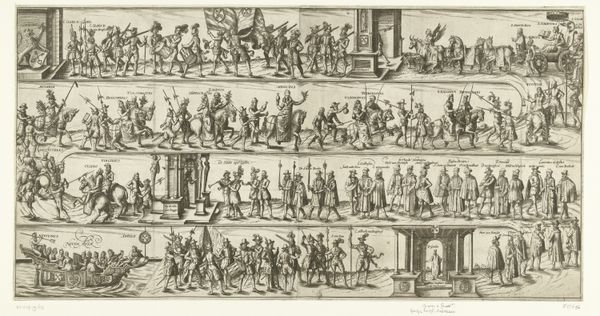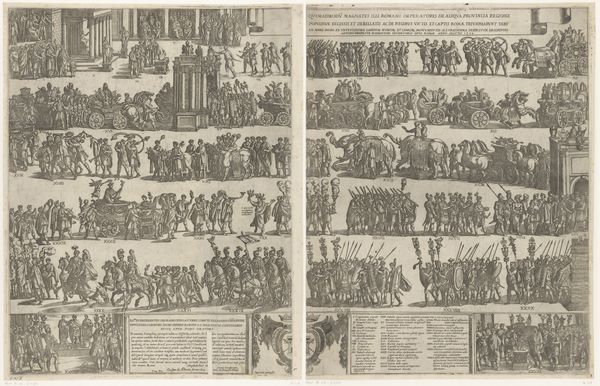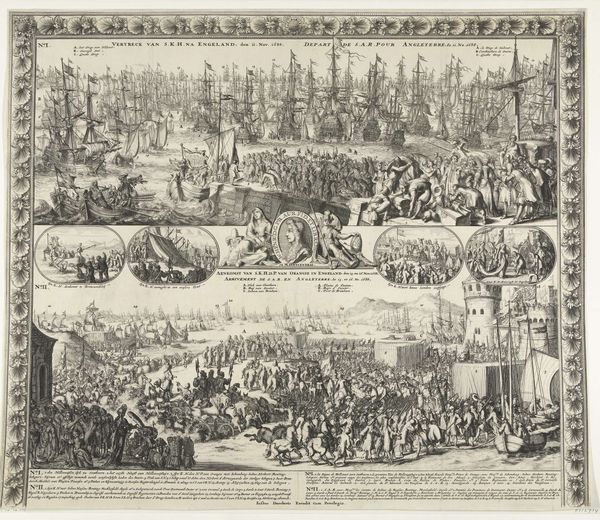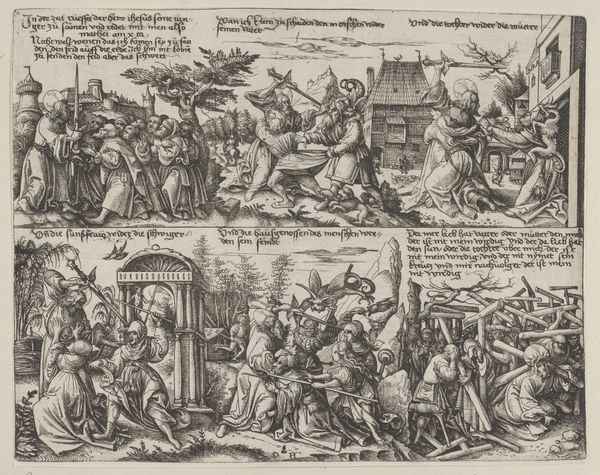
print, engraving
#
comic strip sketch
#
allegory
#
narrative-art
#
mechanical pen drawing
# print
#
pen illustration
#
pen sketch
#
old engraving style
#
mannerism
#
figuration
#
personal sketchbook
#
pen-ink sketch
#
line
#
pen work
#
sketchbook drawing
#
genre-painting
#
history-painting
#
storyboard and sketchbook work
#
engraving
#
miniature
Dimensions: height 402 mm, width 500 mm
Copyright: Rijks Museum: Open Domain
Curator: So, let's explore "The Tree of Folly" by Adriaen Huybrechts, created around 1560-1580. It's a fascinating engraving held at the Rijksmuseum. Editor: It's really intricate. There's almost a comic strip feel to the presentation, and it has an old-fashioned narrative style. It definitely reads like some kind of complex moral lesson. What's your interpretation? Curator: Well, looking at the historical context, we see this piece emerging during a period of significant social and religious upheaval. The "tree" metaphor was frequently used to represent systems of belief, lineage, or even sin. In this case, the tree bears the fruits of foolish behavior, and the various scenes depict common vices and follies of the time. How do you think it reflects the power structures of the time? Editor: I guess it points out the flaws and weaknesses that can be found throughout all levels of society? I hadn’t considered that. Curator: Exactly! Think about how it comments on wealth, poverty, love, work, family... are certain groups being targeted? What could this tell us about society's concerns? Moreover, how does the choice of the engraving medium, which allowed for wider dissemination, shape the work's activist potential? Was Huybrechts attempting to promote certain ideas? Editor: So, the image can almost be used as a cultural artifact. Curator: Precisely. Editor: This definitely gives me a new framework to appreciate this work! Thank you. Curator: You’re welcome! Considering these artworks within their social, historical and political framework gives you additional lenses through which we can engage with and interpret them.
Comments
No comments
Be the first to comment and join the conversation on the ultimate creative platform.
